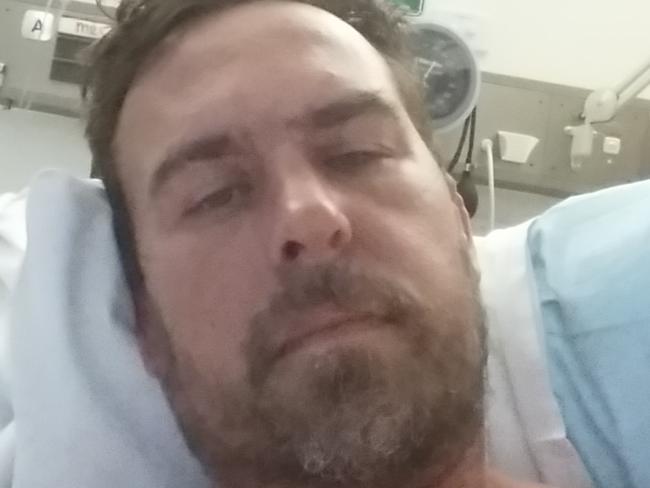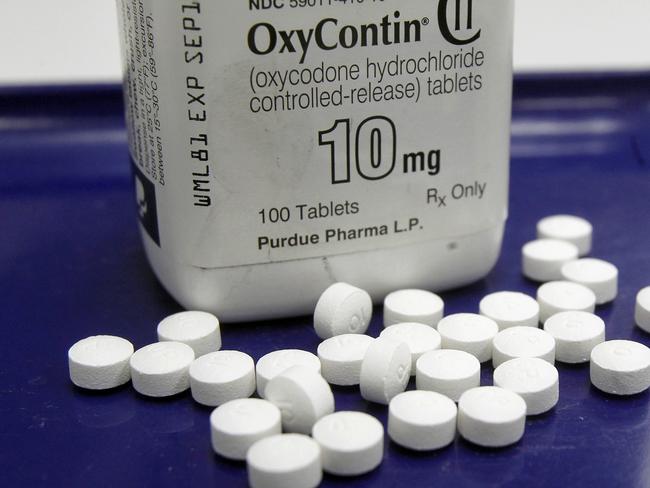Prescription drug-induced deaths kill more than illicit drugs as face of Australian addiction is transformed
PAUL was fit and young when his life changed for the worse. The addiction he suffered from started innocently - and is Australia’s most prolific silent killer.

EXCLUSIVE
PAUL Denys was 24 when he suffered a “bit of pain” from a football shoulder injury that led a friend to suggest he try Nurofen Plus.
The former prison officer bought a packet over the counter which “gave him a bit of a buzz”. It also kickstarted a 21-year addiction where he consumed up to 90 tablets a day and almost cost him his life.
“It gave me a buzz but the other side, living a normal life, just wasn’t there,” he told news.com.au. “I was getting in trouble at work. I was a good officer and my performance dropped. Being intimate with my partner was no more. My whole health deteriorated, I put on so much weight. I was living half a life. The drug just took over. I was going to four chemists a day. It just had a hold of me.”
‘I HAD A HYSTERECTOMY TO FUEL MY ADDICTION: Read part two of our prescription drug series
On Christmas Eve 2015 he woke with a searing pain in his stomach and was rushed to hospital for a 10-hour emergency surgery following a “burning ulcer”. Still “too embarrassed to look the nurse in the eye”, it fell to Paul’s fiancee to reveal the extent of his habit.
Now 45, following two more operations and a stint in a mental health hospital, Paul is no longer ashamed to speak about his ordeal.
“I suffered depression, my fiancee left, I was living in my car for about three weeks … I just didn’t want to be around anymore.”
He said anyone who finds themselves in such a situation should find someone they trust to speak to.
“That person can help you. I felt embarrassed but now I wouldn’t be embarrassed. Being embarrassed nearly cost me my life. It’s just like any other drug, heroin, cocaine or ice — it’s got to take something that will nearly cost your life to wake up.”


The harrowing scenario is becoming more common in Australia as the typical profile of a person killed by drugs has changed, sparking fears of an epidemic hidden in plain sight.
In 2016, Australia recorded its highest number of drug-induced deaths in 20 years with 1808 people killed — more than at the peak of the heroin crisis in 1999 when 1740 drug-induced deaths were recorded, ABS figures show.
Significantly, the most likely person to die a drug-induced death is now a middle-aged man living in regional Australia accidentally killed after mixing prescription drugs like benzodiazepines or oxycodone. In 1999, the most common was someone in their early 30s dying from an overdose of morphine, heroin or benzodiazepines.
The problem is so severe, older people have been earmarked by the National Drug Strategy as a priority due to chronic pain and social isolation which can contribute to accidental addictions to prescription medicine.
ScriptWise CEO Norhawa Bee Mohamed Ismail, who runs the charity founded by Heath Ledger’s father Kim after his son died of an overdose in 2008, said prescription drug addiction is becoming a “public health crisis” which is “still under the radar”.
“In terms of the statistics, it’s pretty clear that [prescription drugs are] killing more Australians than illicit drugs but for some reason a lot of the money has continued to be invested in illicit drugs,” she said.
“People don’t see they have an issue. Especially for depression and chronic pain, they actually say they can only function on these medications but they don’t realise that that’s also a sign of dependency. When you’ve taken it for eight or nine years, you’re not actually managing the issue.”

It comes amid a widespread opioid crisis in the US that killed more than 40,000 people in 2016. Many deaths have been blamed on a street version of prescription opiate fentanyl, causing anxiety among health professionals in Australia and the UK.
Australian National Drug and Alcohol Research Centre director Professor Michael Farrell told news.com.au US developments are of “great concern”.
“The issue in Australia that we remain concerned about is that the deaths year-on-year with prescription drugs continues to go up and we are looking at that with anxiety because we definitely do not want to end up where the United States is and we are somewhat concerned about the trend,” he said.
“The big issue for us is, is the US a case in point or is this a problem that is going to roll out over the rest of the world? We need to look carefully and we need to be ready to respond.”
But the problem is complicated by the fact many using prescription drugs do so for legitimate reasons, meaning it’s not as simple as “licit versus illicit” substances, he said.
“The dilemma we have with the people with the chronic pain problem is that they need these painkillers, but after a while they become ineffective so they end up with a substantial problem and yet their pain is not adequately controlled.”
Read part 2 of our prescription drug series: “I had a hysterectomy to feed my addiction”



